When I became a student, I figured it would be nice to learn some hot tech of the moment. I’ve picked Flash since it was really popular that days. After I got the hang of programming, I decided to make a game of my own. Platformers seemed boring, so I’ve decided to make something special. A flight simulator. In Flash.
Somehow, it actually worked. The gameplay was terrible, the graphics even worse, but it had dogfights and even missions to bomb ground targets. I showed it to a couple of friends, then shelved it, but a few months later, I discovered Newgrounds.
I was surprised how most NG games were, so I thought my “simulator” would blow people’s minds. I translated it into English, uploaded it… and nothing happened. The ratings were average, reviews said the potential was there but it was unplayable. Which, looking back, was fair.
Endless War 1

At the time though, those reviews made me furious. I thought I’d brought a breakthrough, but people wanted simple shooters instead. Fine. I’ll just give them what they want..
So I decided to make the simplest possible game, as fast as I could. I went with a top-down shooter - a popular genre that was easy to build.
It took me just three weeks. One mission per screen: reach the exit, optionally kill everyone. Each mission started you with a new weapon. I made 15 guns and 15 World War II missions (5 for Allies, 5 for Germans, 5 for Soviets). That didn’t seem like enough, so I added 14 more missions set in Vietnam (7 for the US, 7 for the Vietcong).
I uploaded the game in summer 2005, and it was received way better than my first attempt. Ratings were around 4/5, and players were surprised it didn’t make the front page. It really didn’t, but the experiment worked.
Endless War 2
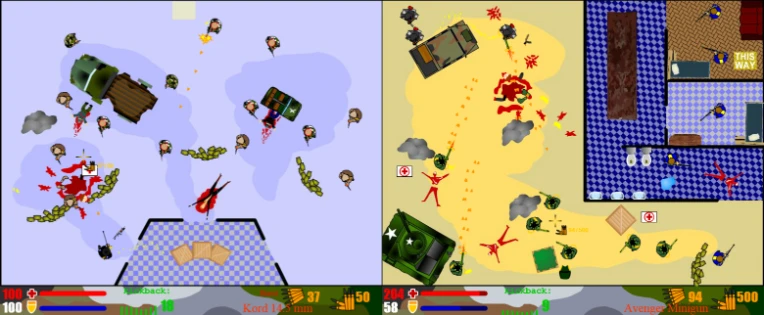
A few months later I wanted to try something bigger. I imagined a story-driven shooter with long levels and tons of enemies. But Flash simply couldn’t handle that kind of scale. After wrestling with it, I settled for a EW sequel: same formula, but with modern weapons.
I built two campaigns of 10 missions each - one for “counter-terrorists,” one for “terrorists.” Around that time, I was also playing ‘90s classics like Blood and Fallout. Inspired by them, I added two small bonus campaigns - with gauss rifles and miniguns.
This game made it to the Newgrounds front page and got way more praise than the first.
A few days later a guy from freeonlinegames.com, Bali, reached me and asked if I could make a reskinned version of Endless War 2 — same engine, just new levels and weapons, exclusively for his site. The pay was modest, but it was my first money from gamedev. And that was hugely motivating.
Endless War 3
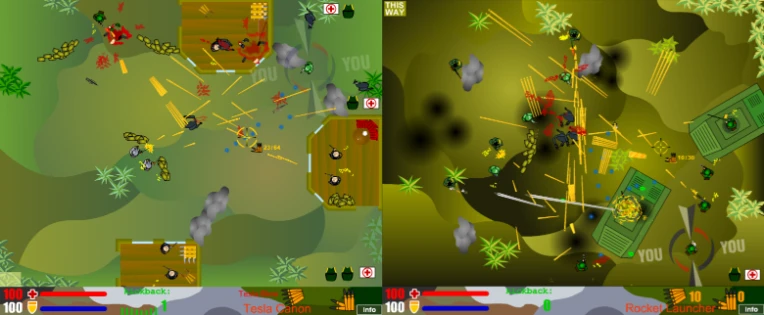
For the next few months, I worked for Bali. It was fine, but I wanted to create my own ideas for the whole internet, not just one website. Around then I learned about game sponsorships. That looked both more profitable and way more interesting.
So I went back to Endless War. My workflow for sequels was simple: copy the old code, remove the levels and weapons, put in new ones. But this time I thought: why throw away the old content? I’ll just bundle it all together.
So I made Endless War 3 a “3-in-1” package — all the old weapons and missions, plus 30 brand new levels. Since each level needed a new weapon, the final game had 90 levels and over 120 guns (not counting grenades, knives, or pistols). The art was still awful, though.
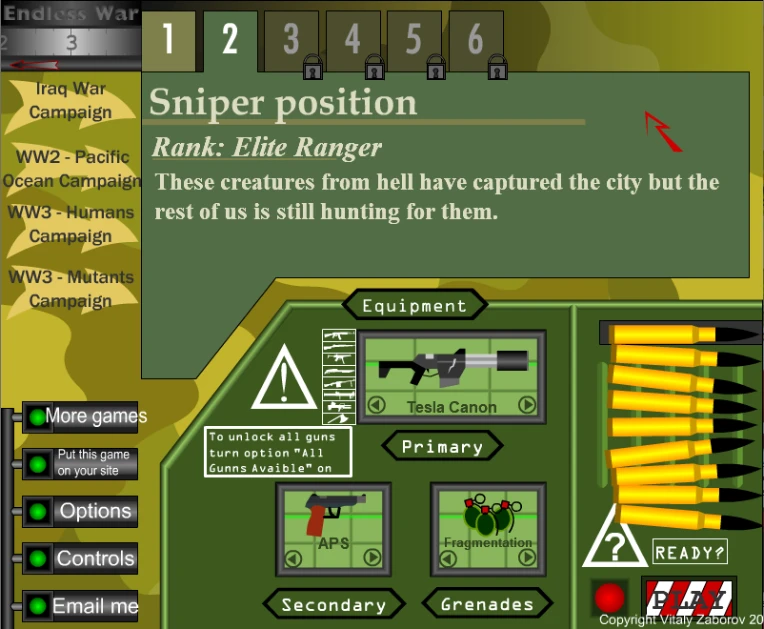
Big sponsors weren’t interested, but I struck a deal with ArcadeTown.com.
The game blew up. Endless War 3 won first place of the day on Newgrounds, hit the front page, racked up millions of plays on ArmorGames and Kongregate, and years later even made it into the Flash Game Hall of Fame by FlashpointArchive.org.
Endless War 4
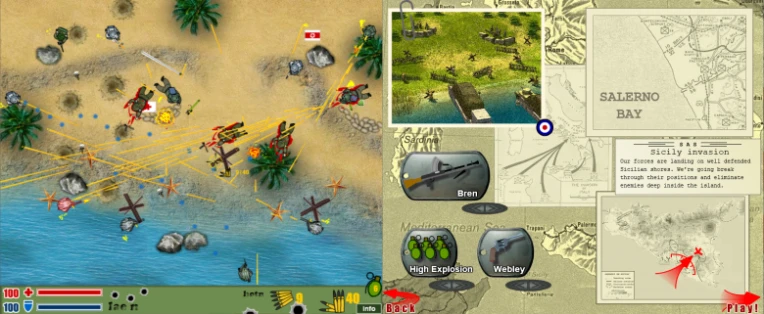
After the success of part three, I shifted focus to other games and graduating. I only came back to Endless War more than a year later. My plan was simple: make the next part quickly and earn something from it. I even outsourced some level art.
But honestly? Development was painful. I just didn’t want to return to the series. Endless War was never my favorite project. Players liked it, it didn’t require complex logic, but designing levels, balancing enemies, and making it work drained all my energy. By then the codebase had turned into legacy spaghetti, and I didn’t want to rewrite it.
I procrastinated with other projects, then came back again and again. In the end, development dragged on for almost a year, and when the game finally launched, it felt like a weight off my shoulders.
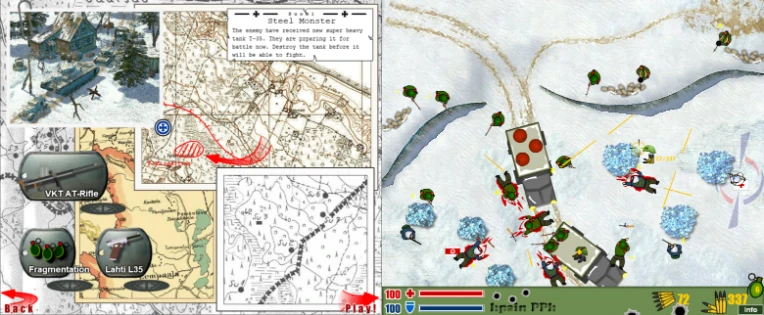
This time I added new levels, kept most of the old weapons, and threw in a bunch of rare Italian, French, and Finnish guns to fit new campaigns about Sicily and the Winter War. Players liked the game, but the response wasn’t as strong as before.
The biggest problem was art and UI. Drawing a clean top-down level where everything is readable is surprisingly hard. The outsourced art was too realistic and clashed with the rest of the style. The UI was a mess — cluttered in menus, too cartoony in battles. Fixing it would have meant redrawing every asset and every weapon. At that point, it was clear I needed a fresh start.
Endless War: Defense
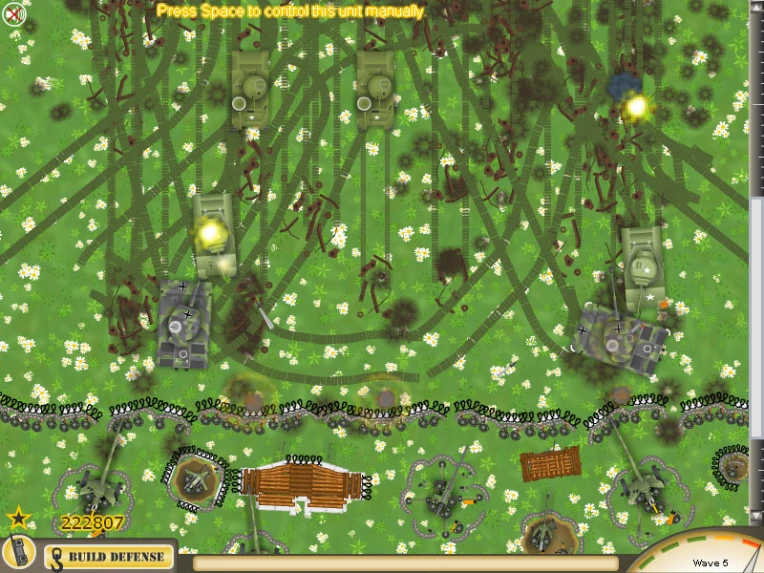
I’d long wanted to make something bigger — strategy, tanks, tons of units on screen. In Flash, though, that meant either a side view or a top-down view. Isometric (Diablo-style) was too heavy for animation and performance. Top-down gave me the most gameplay flexibility, and I already had experience with it.
So I returned to the series, but this time started from scratch. I even redrew all the soldiers. There were tanks, artillery, bunkers, and trenches. I chose the line-defense genre: simple to make, visually satisfying, and popular at the time.
Three World War II campaigns: USSR, Germany, Allies.
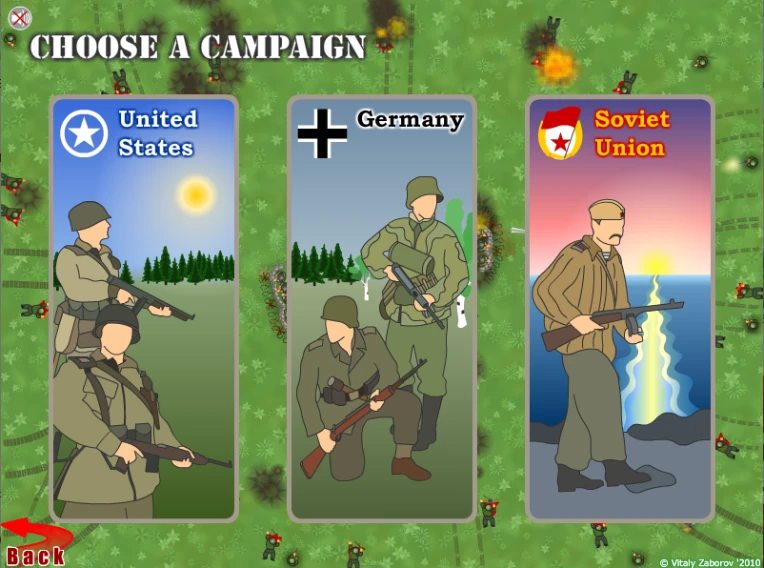
Gameplay was straightforward: buy soldiers and cannons, start a wave, and hold off incoming infantry and armor. Kills earned points, which you used to buy more units or repairs. You could even call in reinforcements with tanks and control them directly. By the end, there were nearly a hundred different units.
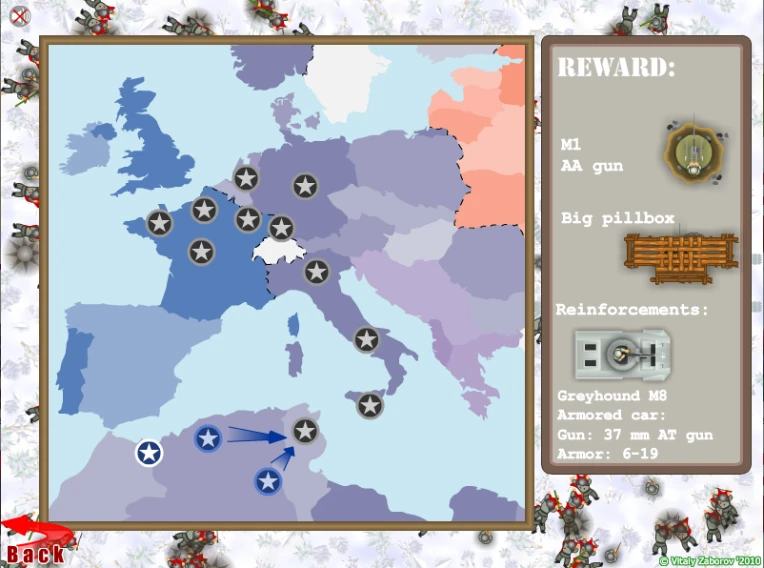
The game came out in summer 2010 and did really well, over 4 million plays at some sites. At the time I didn’t see it as a huge success, though. Expanding it into a full RTS would’ve been way too much work. So again, I left the series behind.
Looking back, I realized I hadn’t paid much attention to where the game actually resonated. Hardcore players loved it, but I only tracked a couple of portals.
Endless War 5
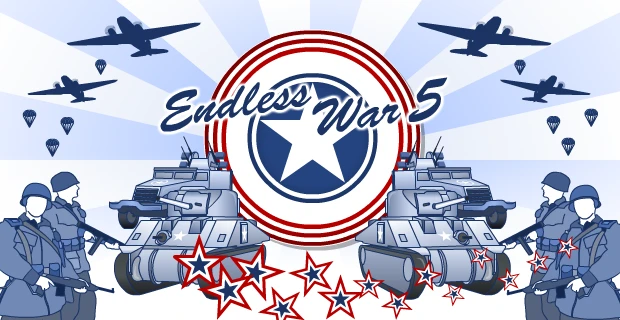
2011 was rough. I spent a year on one failed project that gave me nothing but bitter experience. At that point I was more pragmatic: I needed a game that would take weeks, not months, and wouldn’t require tons of art and animation. The bar for visual quality had already risen since the fourth game, so I needed something lean but polished.
I still had plenty of tanks and fortifications left over from Endless War: Defense. What if I made the game about tanks instead of infantry? Smaller scale, easier to draw, and more visually appealing.
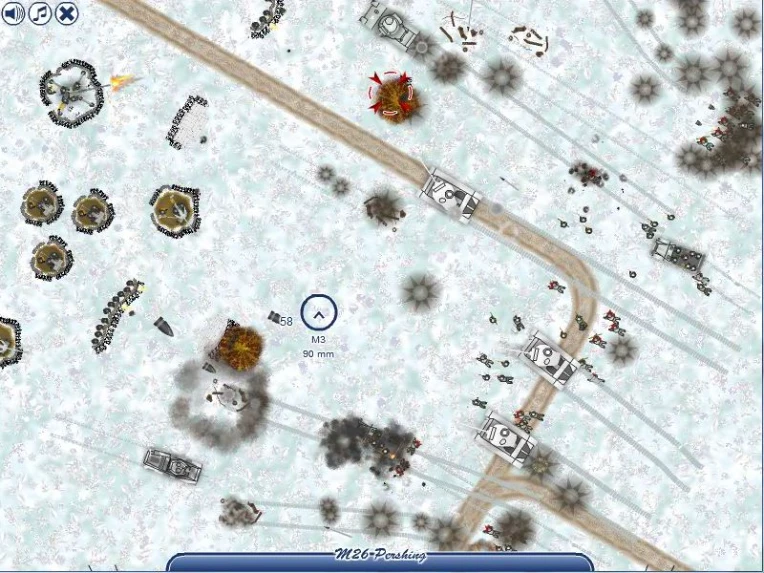
So I built a tank-focused campaign, this time just one campaign, Allies. I reworked the shooting mechanics, added new units, and completely remade the balance. The game was done in a couple of months, plus some time to negotiate sponsorship. It launched in summer 2012.
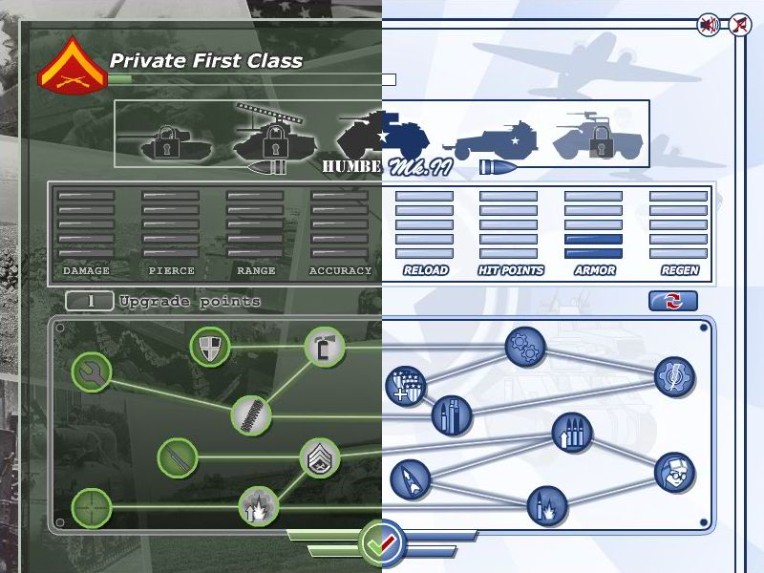
For this release I even commissioned music and put a lot of effort refining the interface until I hit on a clean design inspired by the colors of the American flag. Players were divided: some complained that now you only controlled a tank instead of soldiers, others were just happy the series continued at all. The game hit the front pages, but it didn’t reach the same heights as earlier parts. By then, competition was stronger, and many players had already moved on to Steam and mobile.
Endless War 6
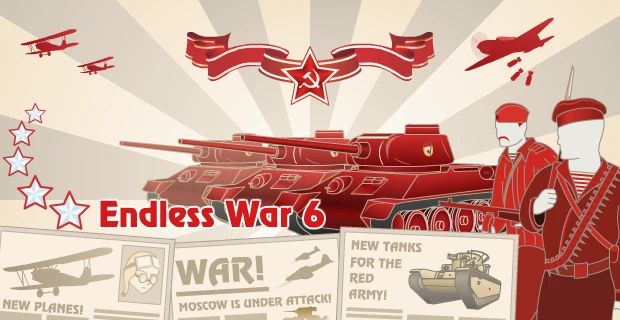
For once, I struck while the iron was hot and immediately started the next game. This time the campaign was for the Soviets. I wanted more variety, so I added flamethrower tanks, an assault gun carrying infantry on its back, and even an “ultimate” ability: calling in air support. The starting tank was the mighty T-35.
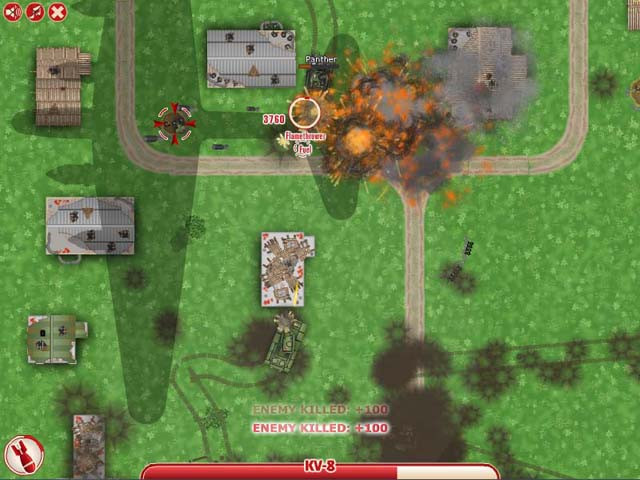
Development again took about three months. Personally, I liked the gameplay in this one more than the fifth, but the Soviet setting didn’t resonate as strongly with the wider audience. The ratings and plays were still solid, but not as high.
Endless War 7
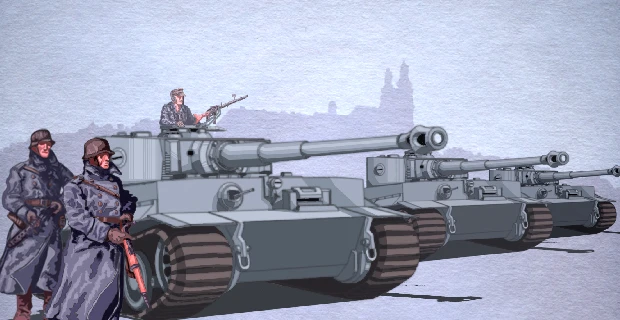
About half a year later, I teamed up with an artist to make another sequel — this time a campaign for Germany. He created a stylish, atmospheric UI, I added more vehicles and tweaked the balance again, and we built the missions together.
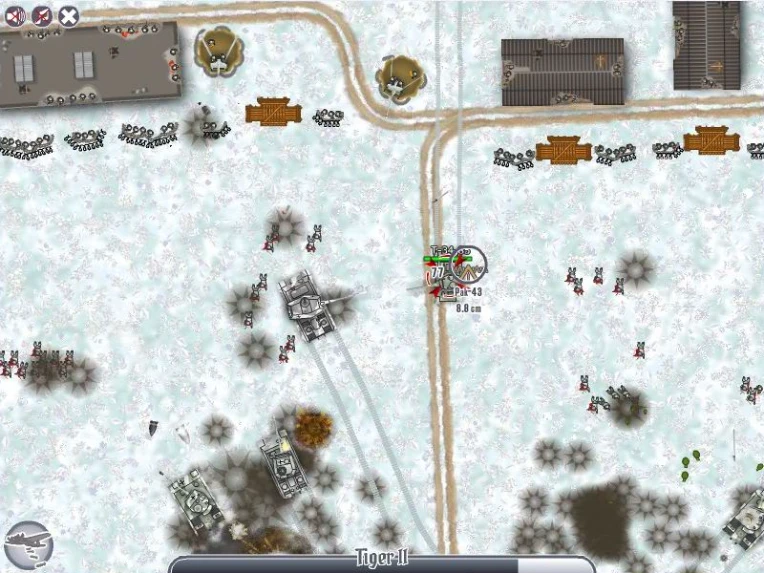
The game came out in summer 2013 and was received just as warmly as the sixth part. But the numbers told a different story. Compared to Endless War 3 — or even the fourth — the player count was much lower. It was depressing. I felt like I was losing my edge, that my games weren’t good enough anymore.
What I didn’t fully realize was how much the Flash market itself had declined. Players had moved to other platforms, and even good Flash games couldn’t compete with Steam or mobile anymore. I should have switched to Unity then, but I was clinging to my old tools.
Still, Endless War 7 was a strong game. It was even nominated for “Shooter of the Year” on ArmorGames. We didn’t win, but making the top ~50 games of the year was a huge achievement.
Endless War Remaster
That’s where the series eventually paused. I made a few other games, but Flash’s death was inevitable, so it no longer made sense to keep investing in it. I shelved my projects for a long while.
But the first Endless War came out in 2005 — which means this year marks its 20th anniversary.
I really wanted to celebrate that milestone. So I pulled myself together, carved out time, and started building a full scale remake on Steam. The remake, obviously, took longer than expected, so I’ve published a web remaster of the first game of the series right on the anniversary day.
